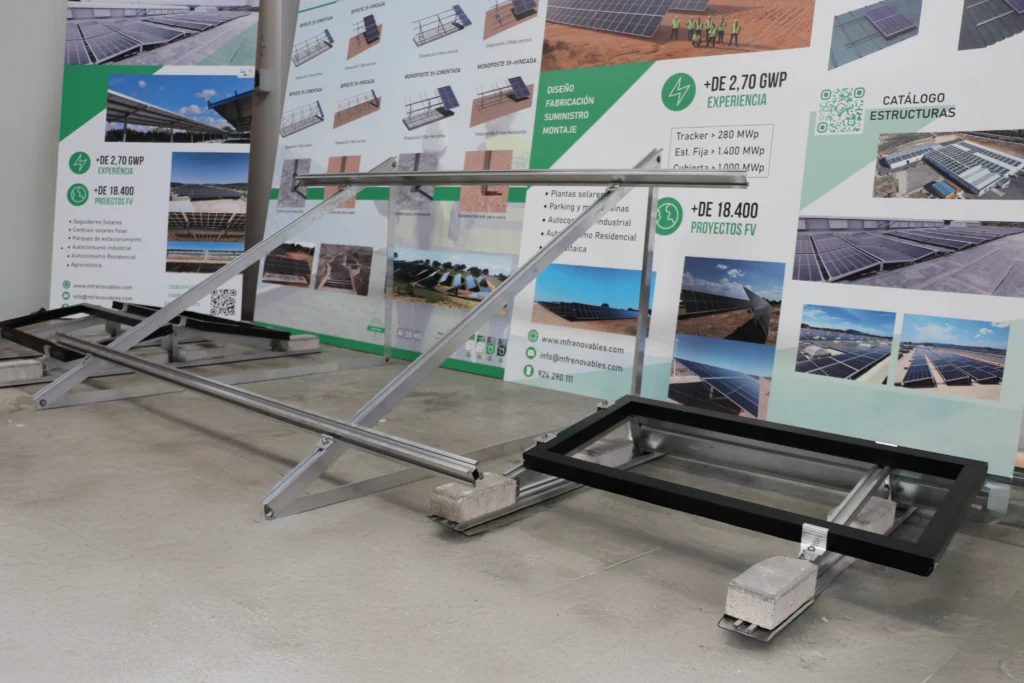

The agrovoltaic está ganando protagonismo como una tecnología clave para el
sustainable development, but many people ask themselves: How does it work?
Really? In this article, we explain it step by step in a simple way so that you can
understand how photovoltaic modules can coexist with crops and contribute
mutual benefits.

The agrovoltaic combines agricultural activities with solar energy production
on the same surface area. This is achieved by installing modules
elevated or semi-transparent photovoltaic panels in crop fields. Unlike
Unlike traditional solar installations, agrovoltaic systems are designed to
optimise crop photosynthesis and then use the ‘surplus’ radiation to
crops to convert into energy.
The modules are usually installed at a sufficient height to allow passage of
agricultural machinery and, in some cases, incorporate solar trackers that adjust the
orientation of the modules during the day.
1. Photovoltaic modules: The essential element for capturing energy
Solar. They can be static or mobile (with tracking technology).
2. Support structures: Designed to ensure stability and allow
sufficient free space for machinery and crop growth.
3. Guidance system (optional): Solar tracking systems
Solar tracking systems optimise energy capture and can be adjusted according to the needs of
Solar tracking systems optimise energy capture and can be adjusted according to the light requirements of the crop.
4. Water management system: Some projects include technologies for
rainwater harvesting or automated irrigation systems.
One of the most important factors in agrovoltaics is light distribution.
Although it might seem that the shadow cast by the modules is a drawback, in many
In some cases, this partial shade can be beneficial.
1. Structural design: Specific solutions for agrovoltaic systems
They are designed not to interfere with agricultural activities and to achieve a
They are designed not to interfere with agricultural activities and to achieve good energy efficiency. These structures adjust their inclination and
focus on crop needs and local conditions.
2. Semi-transparent photovoltaic modules: This type of module allows for
passage of a certain amount of light, which benefits crop growth.
3. Bifacial photovoltaic modules: They capture light on both sides, increasing
energy efficiency.
4. Light and humidity sensors: They monitor the conditions of the
environment to optimise both agricultural and energy performance.
5. Solar tracking systems: Adjust the position of the modules to
They adjust the position of the modules to maximise solar collection according to the time of day.


1. Structural design: Specific solutions for agrovoltaic systems
They are designed not to interfere with agricultural activities and to achieve a
They are designed not to interfere with agricultural activities and to achieve good energy efficiency. These structures adjust their inclination and
focus on crop needs and local conditions.
2. Semi-transparent photovoltaic modules: This type of module allows for
passage of a certain amount of light, which benefits crop growth.
3. Bifacial photovoltaic modules: They capture light on both sides, increasing
energy efficiency.
4. Light and humidity sensors: They monitor the conditions of the
environment to optimise both agricultural and energy performance.
5. Solar tracking systems: Adjust the position of the modules to
They adjust the position of the modules to maximise solar collection according to the time of day.
In several projects in France and Spain, systems have been implemented
Agrovoltaic systems in vineyards, olive groves, fruit orchards, various vegetable crops, etc.
A good example of this are trials carried out in Francia in which they have been achieved
Yield increases of +45% in white Grenache, +30% in Burlat cherries and
+23% for cucumbers, among other results.
In addition, the TFZ (Technology and Demand Centre at the
German Renewable Resources Competence Centre: Agrovoltaics, situation and issues
pending, states that agrovoltaics can reduce the need for irrigation in some
cases, a reduction of up to 30% in water consumption has been observed in
agrivoltaic installations.
Agrovoltaics represents a revolution in the way we manage
natural resources. By understanding how it works, it is easy to see why this technology
is attracting worldwide attention. With continuous advances in the design of
vsystems and ongoing research, the potential of agrovoltaics for
The potential for transforming agriculture and energy generation is immense.
In upcoming posts, we will explore even more benefits, challenges, and case studies.
success.





